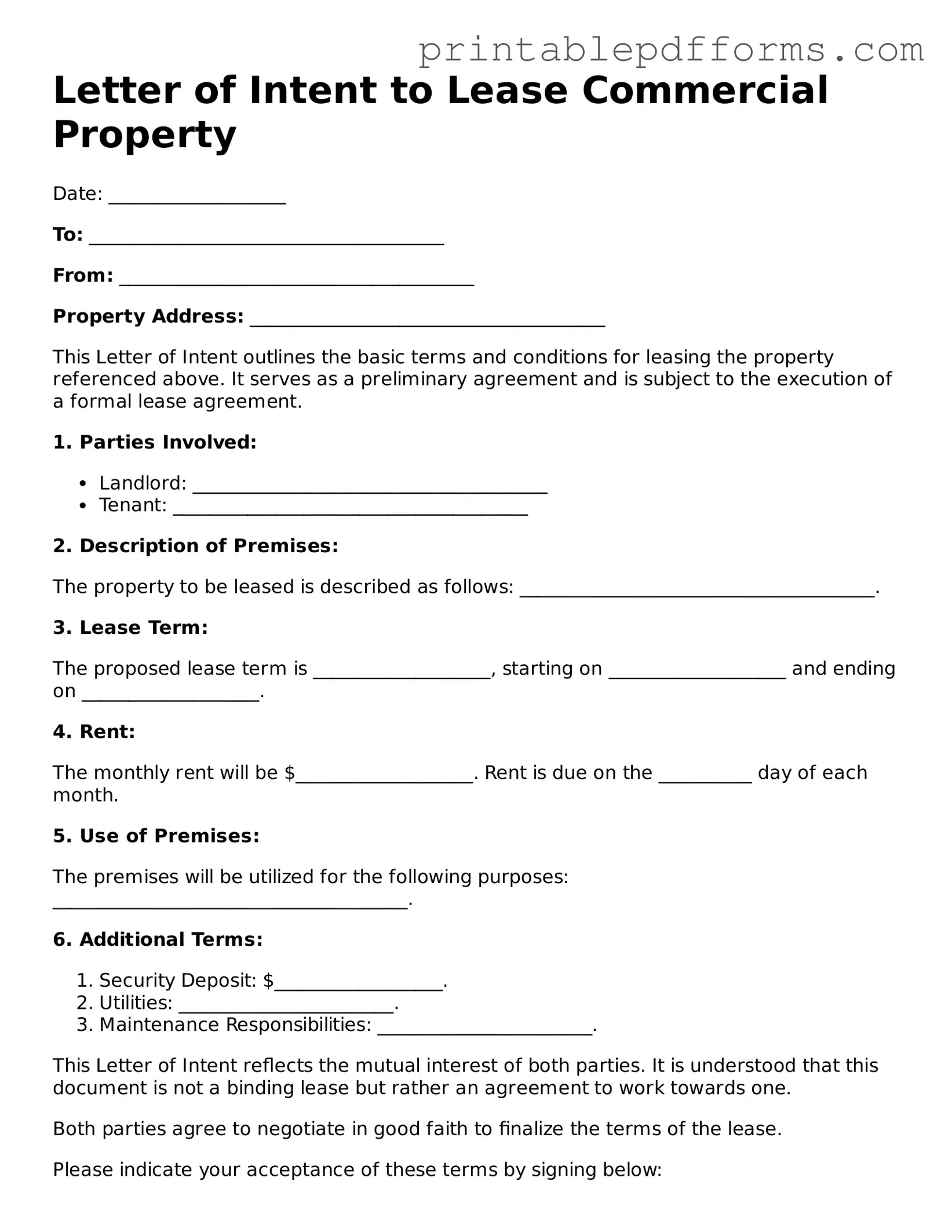Letter of Intent to Lease Commercial Property
Date: ___________________
To: ______________________________________
From: ______________________________________
Property Address: ______________________________________
This Letter of Intent outlines the basic terms and conditions for leasing the property referenced above. It serves as a preliminary agreement and is subject to the execution of a formal lease agreement.
1. Parties Involved:
- Landlord: ______________________________________
- Tenant: ______________________________________
2. Description of Premises:
The property to be leased is described as follows: ______________________________________.
3. Lease Term:
The proposed lease term is ___________________, starting on ___________________ and ending on ___________________.
4. Rent:
The monthly rent will be $___________________. Rent is due on the __________ day of each month.
5. Use of Premises:
The premises will be utilized for the following purposes: ______________________________________.
6. Additional Terms:
- Security Deposit: $__________________.
- Utilities: _______________________.
- Maintenance Responsibilities: _______________________.
This Letter of Intent reflects the mutual interest of both parties. It is understood that this document is not a binding lease but rather an agreement to work towards one.
Both parties agree to negotiate in good faith to finalize the terms of the lease.
Please indicate your acceptance of these terms by signing below:
Accepted by Tenant: ___________________________
Signature: ___________________________
Date: ___________________________
Accepted by Landlord: ___________________________
Signature: ___________________________
Date: ___________________________
This Letter of Intent is governed by the laws of the State of ___________________.
